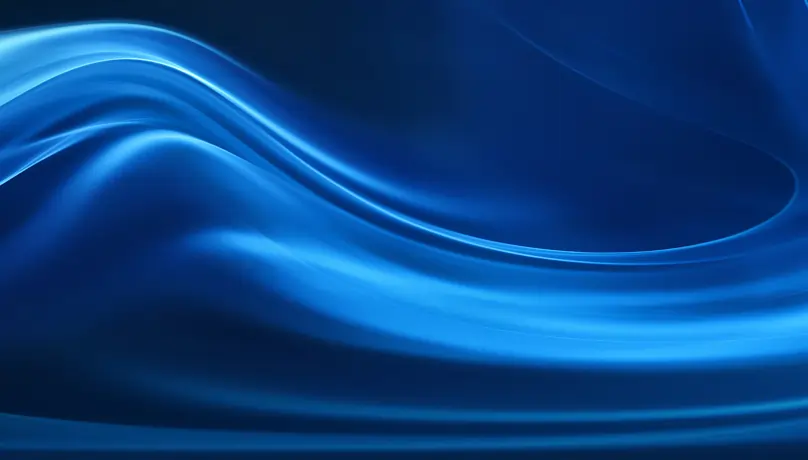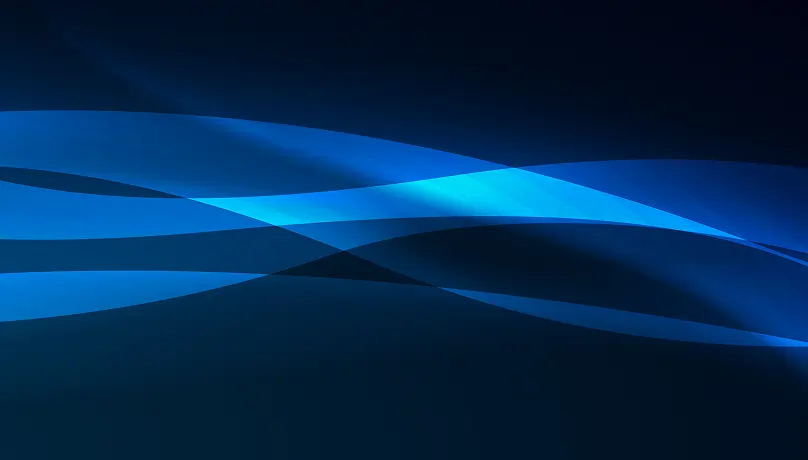About 70% of companies grapple with significant technological debt, incurring an average of 20-40% of their IT budget on remediation efforts. And now we have several levels of understanding of what is a tech debt. On the first level, this hidden burden can be compared to a financial resemblance. Something like a traditional loan with fixed interest rates that shapeshifts and evolves with your software. Every quick fix, workaround, or deferred optimization adds to the pile, compounding over time like interest on a credit card.
On the second level, we understand the impact of technical debt — it affects software quality, agility, and, ultimately, business success. You can ignore it, and it might seem convenient in the short term. But eventually, the bill comes due — in the form of bugs, security vulnerabilities, and an inflexible codebase.
On the third level, you may understand what technical debt is in DevOps and probably give your all to achieve zero debt. But there is a thing — you could do with a strategic approach.
Strategic technical debt management emerges as the key. It's a deliberate approach that acknowledges the inherent existence of technical debt but prioritizes its mitigation based on its impact on business goals and long-term sustainability. This way, you try to balance, weighing the cost of immediate fixes against the potential future liabilities of unaddressed debt.
But there is another thing — is eliminating technical debt possible at all? The "Zero Technical Debt" movement champions a purist ideal — a pristine codebase free from any imperfections. While the aspiration is admirable, the reality is often more nuanced. Chasing absolute zero can be a costly and resource-intensive endeavor, potentially diverting focus from innovation and core business objectives.
Empower your IT team to focus on innovation and growth by outsourcing your technical debt management
The Pros and Cons of Zero Technical Debt
If we say there is a real way to achieve zero tech debt, you won’t buy it. But the truth is much more complex — the path to "Zero Technical Debt" is often riddled with challenges and trade-offs. But the pursuit comes with its set of advantages, necessitating a nuanced evaluation of all the components of this journey.
Advantages of Striving for Zero Technical Debt
Enhanced Code Quality: Imagine a codebase where clarity reigns, elegance prevails, and bugs are a distant memory. Striving for zero debt encourages writing clean, well-documented code, fostering maintainability and reducing future rework efforts. Adhere to coding best practices, such as SOLID principles and clean code techniques, and you’ll get better results immediately. A notable example is Spotify, which attributes its ability to swiftly scale and innovate to its dedication to maintaining minimal technical debt. They also have some problems with interaction between mobile and web software, but they still remain one of the most advanced tech companies.
Boosted Development: A touch of technical debt doesn’t hamper development teams from navigating projects. Your dev teams can respond more swiftly to market demands and implement new features efficiently when they reduce complexities and streamline processes. For instance, Amazon Web Services (AWS) maintains a culture of zero technical debt, facilitating rapid innovation and product delivery. We can’t be sure for 100% since all technologies are often hidden information, but the external “signs” show the company leverages continuous integration and deployment (CI/CD) pipelines to automate testing and deployment processes.
Savings In The Long Run: Addressing technical debt upfront might seem expensive, but consider it an investment in future stability. Proactively fixing issues and building with quality in mind allows you to avoid costly bug fixes, rework efforts, and security vulnerabilities down the line. As Amazon emphasizes, "Investing in high-quality infrastructure saves money in the long run." Alongside this, we can mention another tech giant, Google, that invests in robust testing frameworks and code review processes to identify and address technical debt early.
Increased Customer Satisfaction: A software system free from technical debt yields a superior user experience. And, hence, loyalty. If you lost your train and don’t know which statement about technical debt is true, just prioritize technical debt reduction, and you’ll come into your own. As Airbnb in their time, for example. They ensure that platforms remain performant and user-friendly, enhancing customer retention and fostering positive brand perception.
Agile Adaptation to Market Changes: Zero technical debt empowers organizations to adapt swiftly to evolving market dynamics and customer needs. Think of Amazon Web Services one more time. By maintaining a clean codebase and modular architecture, they can quickly pivot their products and services to capitalize on emerging opportunities. That’s why the company (as of the beginning of 2024) is the leader of cloud services in the world.
Challenges and Drawbacks
More Expectations — Worse Outcome: Recall the mythical Sisyphus. The very one whose efforts were hard but pointless. The quest for absolute zero can be such a task. Software is inherently dynamic, and new technical debt will inevitably arise with requirements evolving and new technologies emerging. Technical texts don't often bring up Buddhists, but here, they are to the point: less expectations is more happiness. And developer efficiency.
Slower Time-to-Market: Obsessively prioritizing technical perfection can slow down development cycles. The meticulous avoidance of any debt may conflict with the imperative for rapid innovation. Perfect example is Apple, which balances debt reduction initiatives with strategic product launches to maintain competitiveness in the market (actually, dominance).
Opportunity Costs: Exclusively focusing on zero tech debt may divert resources from exploring new opportunities or responding to evolving market demands. The singular pursuit of zero debt may inadvertently limit an organization's ability to seize strategic opportunities for growth and innovation. Netflix (again!), while emphasizing code quality, acknowledges that "sometimes perfect is the enemy of good" and prioritizes features over absolute technical purity.
Learn 8 metrics for measuring your technical debt
Realistic Targets for Technical Debt
Zero technical debt phantom might be aspirational, but in reality, it's often an unattainable and even counterproductive target. Instead, savvy software development teams adopt a pragmatic approach, setting achievable goals and balancing between speed and code quality. Here, we delve into such an approach.
1/ Understanding Pragmatic Approaches
Pragmatic approaches to technical debt management are all about acknowledging the inevitability of debt accumulation while proactively managing its impact. Rather than totally excluding technical debt from infrastructure, companies adopt a more realistic mindset that prioritizes strategic debt reduction efforts. Identify critical areas of technical debt, such as legacy systems or code inefficiencies, and allocate resources accordingly. Don’t forget about tools for static code analysis and code quality metrics — it’s your way of gaining insights into areas requiring immediate attention.
Prioritization is Key: Not all technical debt carries equal weight. It’s better to use a risk-based assessment system to prioritize debt based on its severity, impact on business goals, and likelihood of causing future problems. Home in on tackling high-impact debt first, but leave room for low-impact debt, which might be acceptable to live with.
Embrace the Pareto Principle: Aim for good enough, not perfect. One more time: crucial areas that contribute to 80% of the impact — address them first with resources possible to use now. It’s significantly better for the company as a whole and for the team in particular to prevent them from burnout. Remember, continuous improvement is more sustainable than aiming for an unrealistic ideal.
Small Steps Are Better: Don’t beat more than you can chew. Break down debt reduction into manageable chunks and integrate them into your regular development cycles. This way, you'll progress consistently without disrupting current projects.
2/ Realistic Goals Better
Accept that any technical metrics and goals should serve something greater. That "something greater" is business goals, expressed in profits in the bottom line. For this reason, sticking to arbitrary metrics, such as lines of code or bug counts, doesn’t make sense. Target measurable goals that embody particular improvements in software quality, try to find ways to enhance software performance. But always keep in mind the end result.
For example, you want to reduce technical debt density or increase code coverage. Appointing metrics around these goals lets you revise your technical debt reduction initiatives. Look for benchmarks and establish clear-cut timelines so that you can track progress and adjust strategies as needed. This is the fastest way to ensure continuous improvement and minimize disruption to ongoing development projects.
Zero in on Business Value: Ensure your efforts contribute to that greater business outcomes discussed above, like improved product quality, faster development cycles, or reduced maintenance costs. Depending on the niche and the product, you can focus on Conversion rate, CSAT, Retention rate, etc.
Use Data To Decide Better: Create a reliable foundation on historical data and industry benchmarks. Analyze metrics like defect rates, code churn, and development velocity to understand your current debt levels and set realistic goals for improvement.
Kaizen in Software Development: Think like a professional athlete. Begin with modest, achievable goals and gradually increase efforts and goals themselves. It’s like Japanese Kaizen culture — small yet consistent improvements, one at a time. Firstly, your team gains experience and confidence. Secondly, this incremental approach helps build momentum and avoid overwhelming your team or setting them up for failure.
3/ Speed and Code Quality: The Gold In-Between
For sure, rapid development cycles are essential for staying competitive in today's market. However, sacrificing code quality in favor of speed inevitably leads to long-term technical debt accumulation. You have to find that proverbial golden mean so that you don't slow down your development but also don't accumulate technical debt because of the high release frequency.
Code Quality Politics: In any possible way, you should establish clear code quality standards. Step by step, these moves are better to make for all parts of your application. Yet, not every component requires the same level of polish. Balance the need for robust, well-tested code with the agility required to deliver features quickly.
Utilize Trade-Off Analysis: When faced with decisions that impact both speed and quality, carefully size up the trade-offs and choose the option that best aligns with your current priorities and project needs. Sometimes, accepting slightly lower code quality for a critical feature release might be necessary, while other projects might warrant a more deliberate and quality-focused approach.
Automate Where Possible: Leverage static code analysis tools, automated testing frameworks, and code refactorization tools to identify and address quality issues early and efficiently. This frees up developer time for more strategic tasks and helps maintain a good balance between speed and quality.
Effective Strategies for Strategic Technical Debt Management
The landscape of technical debt is so complex that it requires a strategic approach that prioritizes actionable strategies for sustainable software development. And there are at least three effective and proven strategies that empower companies to effectively manage and mitigate technical debt.
Prioritizing Technical Debt Reduction
It can be confusing: just a few passages above, we were talking about not being afraid to let a certain amount of technical debt be, and now here we are. But prioritization does not contradict the previous words, it reinforces them. Identifying and addressing high-impact areas of debt maximizes the return on investment in debt reduction efforts. However, you must thoroughly understand the factors contributing to technical debt, such as code complexity, architectural deficiencies, and legacy systems. By leveraging the Technical Debt Index (NDepend or CAST) and Dependency Structure Matrix (go to Code – Analyze Code – Dependency Matrix), you can quantify and prioritize technical debt based on its impact on software quality and maintainability.

CAST Software found that companies that prioritize technical debt reduction (depending on the niche and technology) can experience a 25% improvement in software reliability and a 30% reduction in post-release defects. By aligning debt reduction efforts with business objectives and constraints, organizations can effectively allocate resources to address critical areas of technical debt, minimizing its impact on software quality and performance.
Implementing Continuous Integration and Deployment
CI/CD pipelines are a cornerstone of effective technical debt management. CI/CD enables development teams to automate testing, deployment, and delivery processes, reducing the risk of introducing new technical debt and accelerating the time-to-market for new features and updates. Integrate automated testing frameworks like Selenium and Jenkins into CI/CD pipelines, and you’ll be able to identify and address technical debt early in the development lifecycle, mitigating its impact on software quality and reliability.
Google Cloud platform has published the DevOps Research and Assessment study, and it revealed very interesting stats. Companies that implement CI/CD pipelines experience a 50% reduction in lead time for changes and a 30% lower change failure rate. This leads us to the conclusion — a culture of continuous improvement and automation can streamline development processes, reduce manual errors, and foster collaboration between development and operations teams. This way enables more frequent and reliable software releases.
Establishing a Culture of Code Review and Refactoring
Culture of code review and refactoring is essential for proactive technical debt management. Code reviews is a perfect move for nipping it in the bud. This way, you identify and address code quality issues, architectural deficiencies, and potential sources of technical debt before they evolve into larger problems. Consider using GitHub or Bitbucket in development workflows. These ones have already empowered many companies by facilitating peer review processes, promoting knowledge sharing, and maintaining code quality standards.
We’d like to back up all the previous statements with the SmartBear Report. They found that prioritizing code review and refactoring leads to a 70% reduction in post-release defects and a 30% improvement in code quality. Encourage your devs to continuously refactor and improve code quality so that it’ll minimize the accumulation of technical debt over time, ensuring the long-term maintainability and scalability of your software.
The Role of Leadership in Technical Debt Management
Effective technical debt management comes after strengthening the leadership and strategic section on guiding a company toward sustainable software development practices. As a leader, you must understand that your impact is much deeper than the tech aspect only. Here's a closer look at the pivotal role of leadership.
Communicate Your Expectations
Clear communication is essential for understanding technical debt and its implications across the organization. Leaders must articulate the importance of prioritizing technical debt reduction and set clear expectations for developers and stakeholders alike. Set out the long-term benefits of proactive debt management, and you’ll be able to align teams toward a common goal and motivate them to prioritize debt reduction efforts.
The 2022 Gartner Survey found that 83% of Chief Communications Officers can make a difference among other C-suite representatives. And tech debt topic isn’t an exception.
But you should align all your messages with business goals. A hint: frame technical debt management as an investment in business outcomes, not as a technical burden. Connect debt reduction efforts to tangible benefits like faster time-to-market, improved product quality, or reduced maintenance costs.
Allocating Resources Appropriately
One more time: don't view technical debt management as a cost center since it's an investment in the future health and agility of your software. Leaders must allocate resources appropriately to support technical debt reduction initiatives and ensure their successful implementation. Consider tools, training, and personnel dedicated to proactive debt reduction efforts. With such investments in debt reduction initiatives, you can minimize the long-term costs associated with technical debt and maintain a competitive edge in the market.
Relatively recently, Gartner found — if we compare companies with proactive management strategies with high-technical-debt companies, the latest spend an average of 20% more on reactive problem-solving. So, prevention is key; it yields significant cost savings in the long run.
Fostering a Culture of Learning and Improvement
Leaders are called leaders for a reason. They play a crucial role in evoking a culture of learning and improvement within their companies. As a leader, promote continuous learning, experimentation, and knowledge sharing. This way, you’ll empower employees to identify and address technical debt proactively. Encouraging devs to participate in code review sessions, attend training workshops, and share best practices cultivates a culture of collaboration and, hence, innovation. And that, in turn, drives continuous improvement in software development processes.
To back this up, McKinsey found that businesses with a strong life-long learning culture are 34% more likely to achieve their strategic goals and objectives.
To sum it up
"Zero Debt" ideal myth can remain just an illusion. But consider it a beacon in this journey that helps to find a sustainable balance between speed, quality, and long-term value.
Remember, the impact of technical debt hinges on leadership setting clear expectations, allocating resources strategically, and cultivating a culture of learning and improvement. Prioritize leveraging CI/CD and fostering code review. This way, you empower your teams to proactively address debt and navigate the ever-evolving tech landscape with confidence.
But life (and dire consequences) happens — recall Knight Capital Group, the famous financial company. In 2012, their technical glitch from unaddressed technical debt resulted in incurring losses of over USD 440 million in just 45 minutes.
Nowadays, proactive technological debt management is vital. Devico specializes in helping organizations navigate the complexities of technical debt and develop tailored strategies for sustainable software development.
Gain an access to seasoned professionals specialized in managing technical debt






